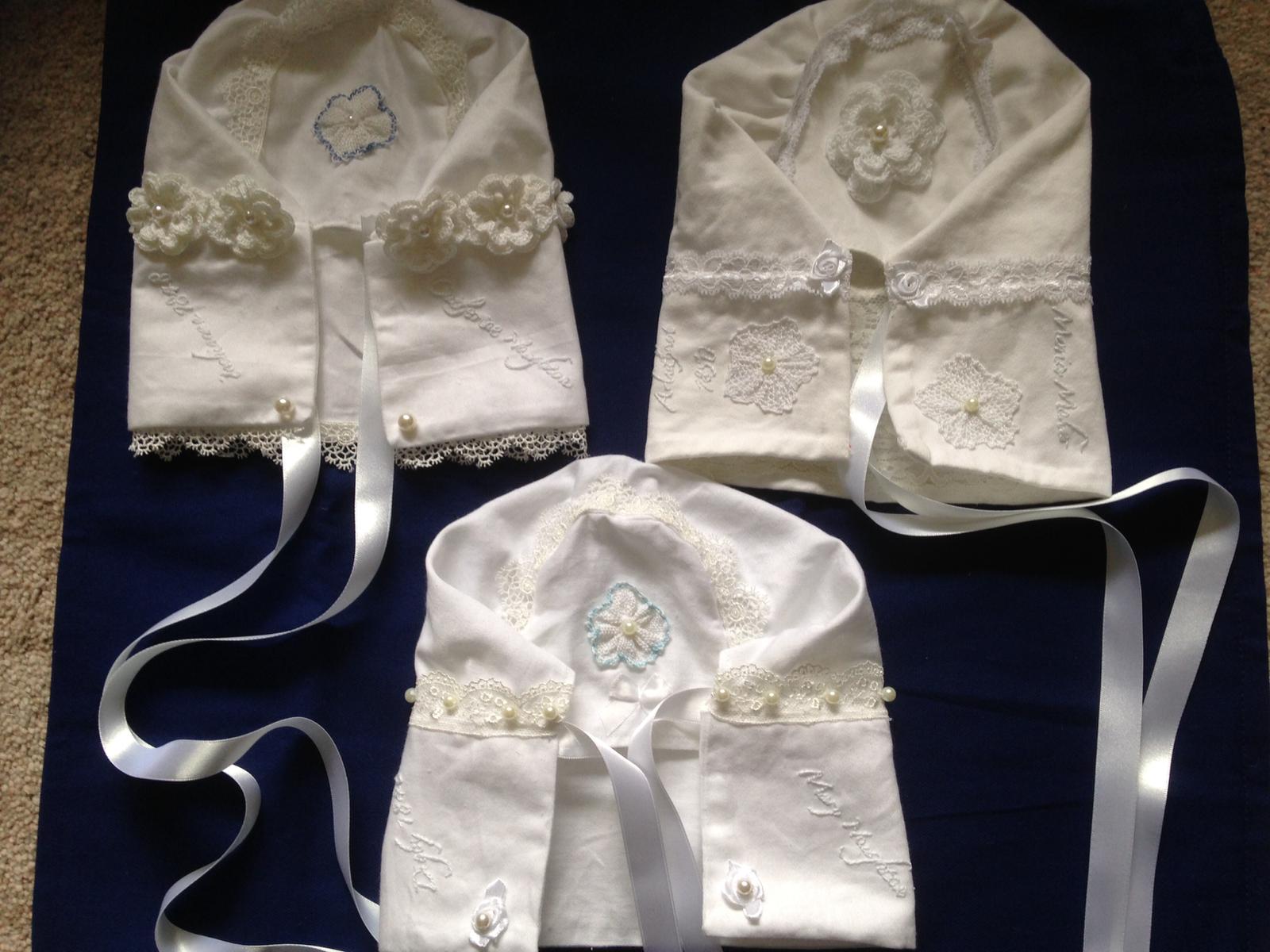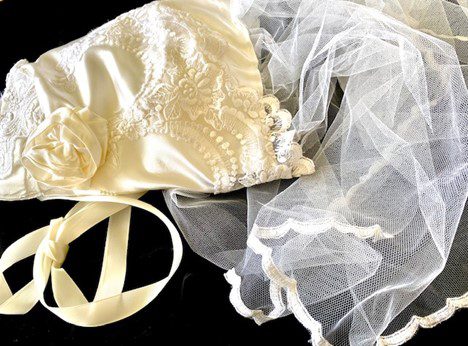
In 2018 artist Christina Henri commenced a textile art memorial to the Orphan Girls, to the ‘Assisted Passage’ lasses who were offered a new life in Australia, (1800s-mid1900s). Henri chose to call her tribute ‘Irish Roses – Bride Ship lasses’. This name was decided on as the
ships carrying the women were subsequently referred to as the ‘Bride Ships’. (Ref: The Bride Ships, Rica Erickson, 1992).
This memorial follows from Henri’s art project ‘Roses from the Heart’ (2007 – ). At the heart of these memorials is the remembrance of the thousands of women, who boarded ships and sailed across the seas to faraway Australia, hopeful of escaping famine, poverty, and death in their homeland. Henri launched the memorial to the Orphan Girls at her ‘Blessing of the Bonnets’ event held at the Fremantle Prison, World Heritage Site, Western Australia, on 29 July 2018. The artist shared her plans for a visual textile art tribute to the women who came out to Australia as part of the Assisted Immigration Scheme. The expectation was for these lasses to provide much-needed domestic service and other trades within the fledgling colony.
Once in Australia many of these single women married and raised families and today thousands of Australians trace their ancestry back to these women. Henri’s project is two-fold: undertaking providing the public with a database embracing the various schemes initiated; plus an art project. Using the ‘Roses from the Heart’ memorial 1860s servants’ bonnet pattern, Henri invited people around the world to fashion a bonnet to the memory of the ‘Assisted Passage’ lasses. Many of these single women, had been advised via various Emigration Schemes that employment, marriage, and a new life would be on offer.

An example of one of the lace bonnets
Henri’s intent for the database is the listing of all known women, including those who stepped on board ships expecting to start a new life with the promise of work and the chance to meet a partner, but whose lives were cut short through death either aboard ship or from a shipwreck. It is anticipated that the database will be enriched by contributions from the public with information about Assisted Passage/ Orphan Girls’ ancestors/families.
For those who would like to make a bonnet tribute the artist can be contacted on: [email protected]
Symbolic bonnets for these Assisted Passage lasses wherever possible are fashioned from pre-loved bridal gowns or fabric used in the making of a wedding dress. Alternatively, material relating to a wedding, e.g. a lace handkerchief or something symbolic such as a
butterfly motif, represents freedom, migration, and hopes for the future.
The Assisted Passage Women’s lives were challenged by all that faced the early pioneers to Australia. They dealt with hardships many today would find daunting. Their stories are part of the fabric of early colonial Australia. These narratives need gathering and sharing. The Orphan Girls trod difficult paths, oftentimes with astounding resilience. The results of their fortitude helped create pathways to enriching Australian society. The anguish these women battled in their early lives prior to boarding ships to Australia served them well as they dealt with new adversities. The courageous and enduring spirits of these emigrant women burn on brightly within their descendants. It is not unusual to hear Australians referred to as … ‘full of spirit, brave, plucky’. This traces back to the early settlers, the women of Irish origin.
The Irish Roses – Brideship Lasses Memorial offers the opportunity to link countries that share histories. In Ireland, The Irish Workhouse Centre in Portumna is a visible example of the enclaves that held the poor during the ‘Great Famine’, An Gorta Mor. All seven of the buildings within the Portumna complex remain today, a solid reminder of the past.
In Australia, visible structures such as the Hyde Park Barracks World Heritage Site, which opened in 1819, and later operated as a Female Immigration Depot (1848-1886 ), remain a cultural tourism icon. Whilst in Tasmania, a colonial building in Hunter Street, Hobart erected in 1825/26, was selected by the Immigration Association in 1851 to house single women and widows arriving in Van Diemen’s Land, it exists now as a prestigious restaurant, The Drunken Admiral.

Bonnets donated by Headford Lace Project to the Irish Workhouse Centre
Places, people, and narratives are the conduit for linking the ‘before and after’ accounts of the Assisted Passage Women/ The Orphan Girls from Ireland to Australia. Art plays a meaningful role in bringing history to public attention. The simple bonnet is a metaphor for women living in the 18th to the late 19th century. Bonnets were integral to a woman’s outfit.
The bonnet in this project is a beautiful item, often deliberately adorned with satin and lace. The details of the woman being remembered is sometimes stitched on a separate cloth label and attached to the inside of the bonnet. The bonnet is imbued with respect for the woman being acknowledged. The rhythmic, repetitive movement of the hand stitching and embellishing the bonnet is meditative and offers the creator the opportunity to think about the life of the lass being evoked.
Henri is especially pleased to be collaborating with the Headford Lace Project in her memorials, Roses from the Heart and the Irish Roses – Brideship Lasses. The artist states that as collaborative partners, the Headford Lace Project Committee maintains her concept beautifully.
Henri acknowledges that visiting the Irish Workhouse Centre, Portumna with Ger Hassett (Headford Lace Project Committee member) in 2019 was a transformational experience. Having spent many years as the Hon artist-in-residence at the World Heritage, Cascades Female Factory Site, Hobart Henri is well aware of the interactive experiences attached to sites of significance. Henri describes being mesmerised by the bare elements of the structure and chilled by the desperate stories of the men, women, and children battling the horrors of what for so many was their ‘last resort’ in the Irish Workhouse Centre.
Henri is extremely grateful to Anne O’Hara Quinn and Ger Hassett (Headford Lace Project) for their support and to all bonnet maker participants for their involvement. To date, there are around 7000 lasses on the database.
Check the database. If a relative of yours is not listed please make contact with Dr. Christina Henri.
